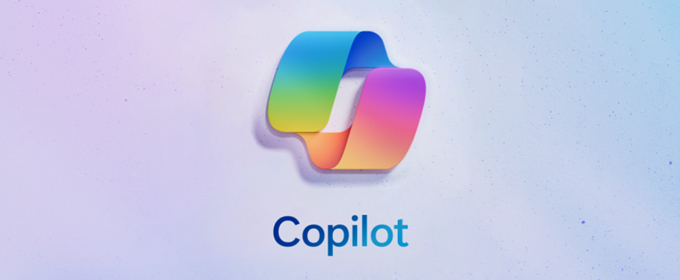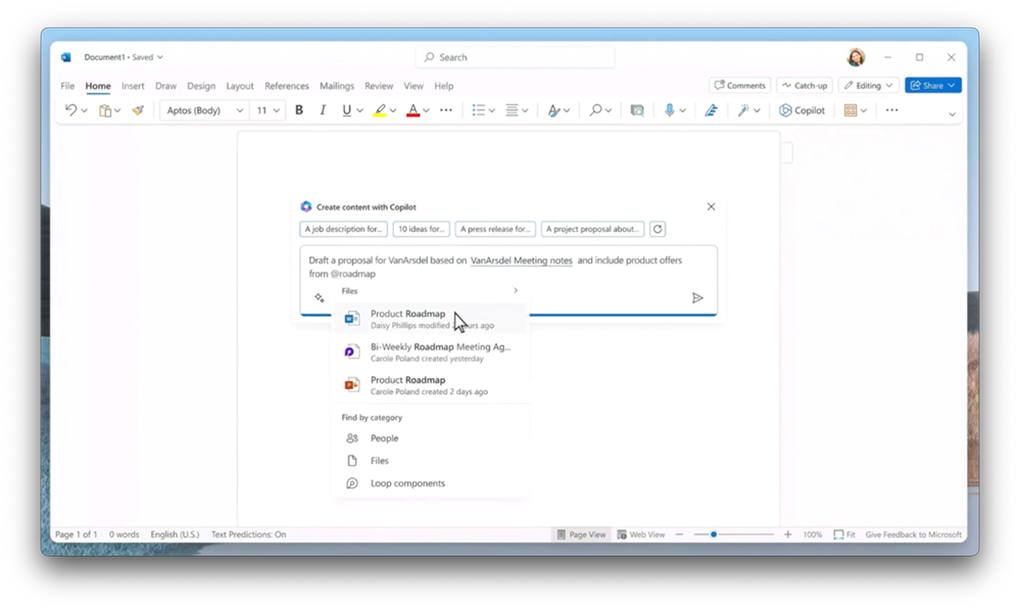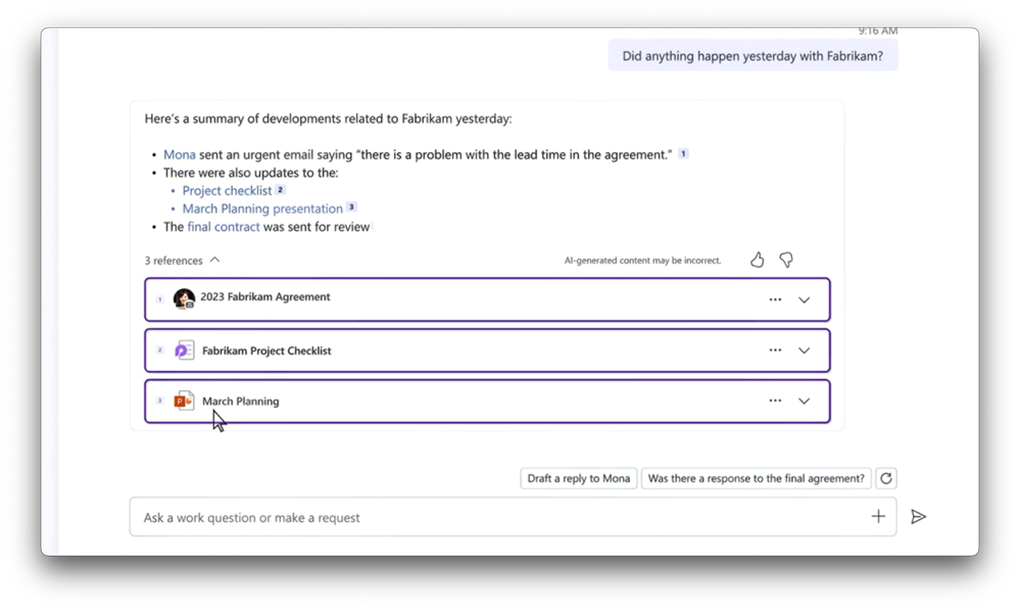What is Microsoft 365 Copilot?
Microsoft 365 Copilot is a generative AI tool and AI-powered assistant, designed to significantly improve your productivity, creativity, and collaboration in Microsoft 365. It will dramatically speed up, and perform, many everyday work tasks for you.
It works across different Microsoft 365 apps, such as Word, PowerPoint, Excel, Outlook, and Teams. It can generate many types of content and provide suggestions, answers, and insights to improve your work and productivity.
Microsoft was one of the first tech giants to go ‘all-in’ on generative AI technology, investing heavily with a multi-billion investment into OpenAI, the maker of ChatGPT, since 2019.
Now, Microsoft are ready to deliver this AI technology as part of Microsoft 365 with Microsoft 365 Copilot, which will be part of a wider Microsoft Copilot suite.
You can watch the introductory launch video for Microsoft 365 Copilot below, but make sure to read on to find out how you can get hold of Copilot yourself and use it within your organisation.


